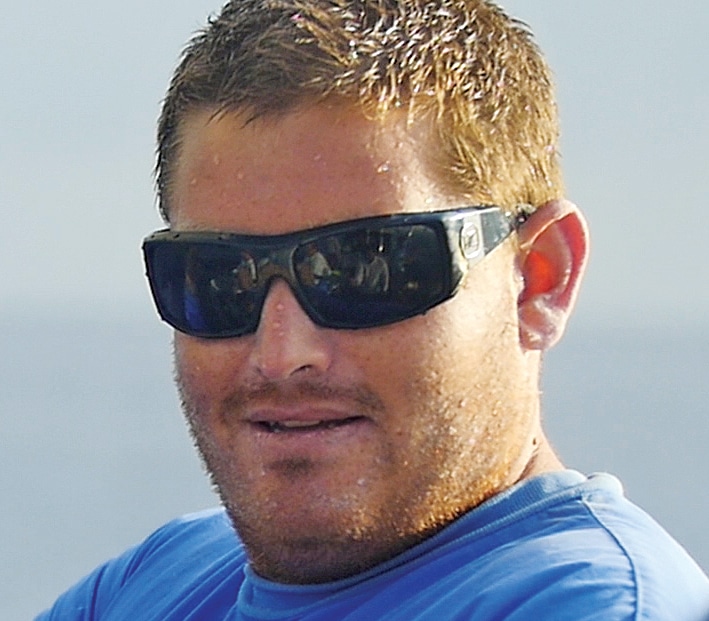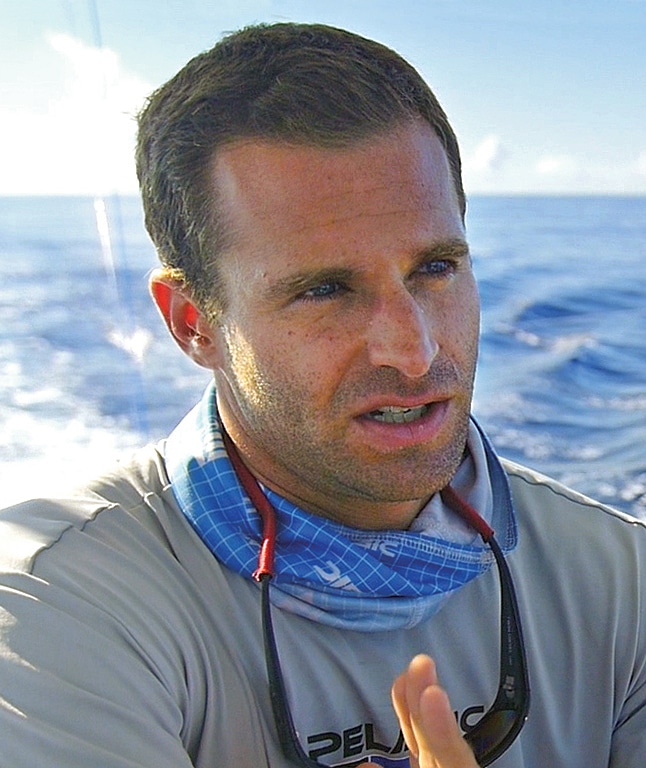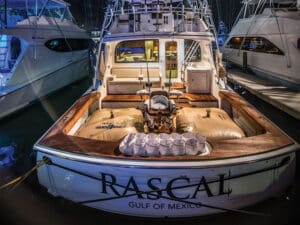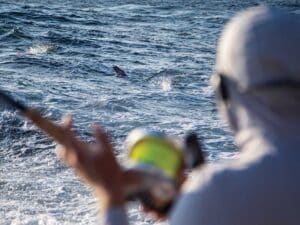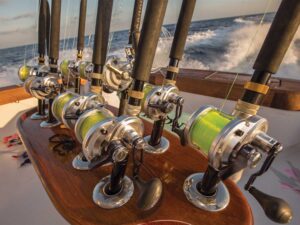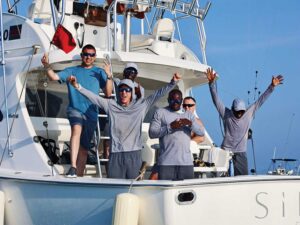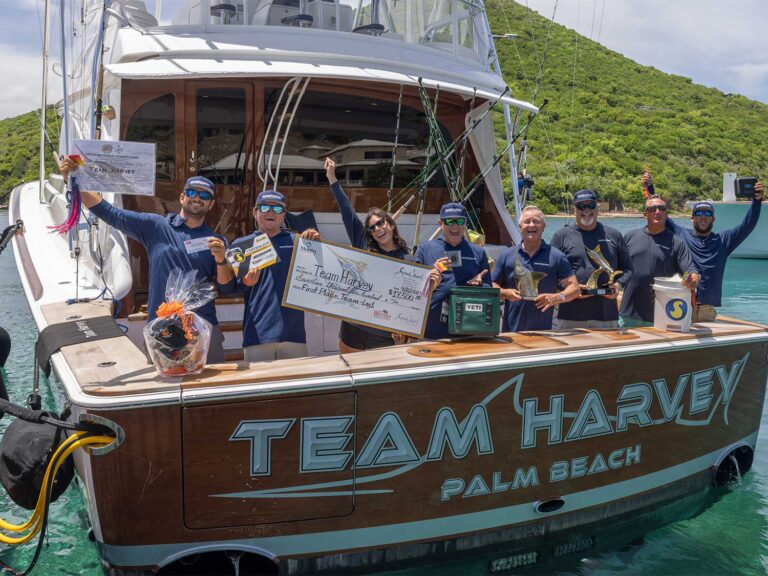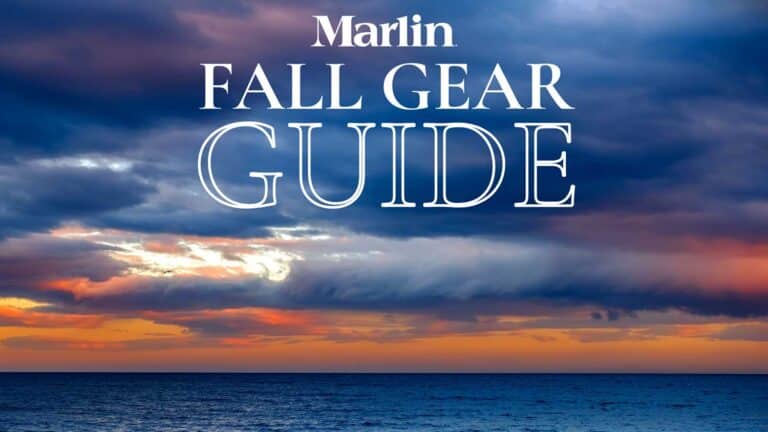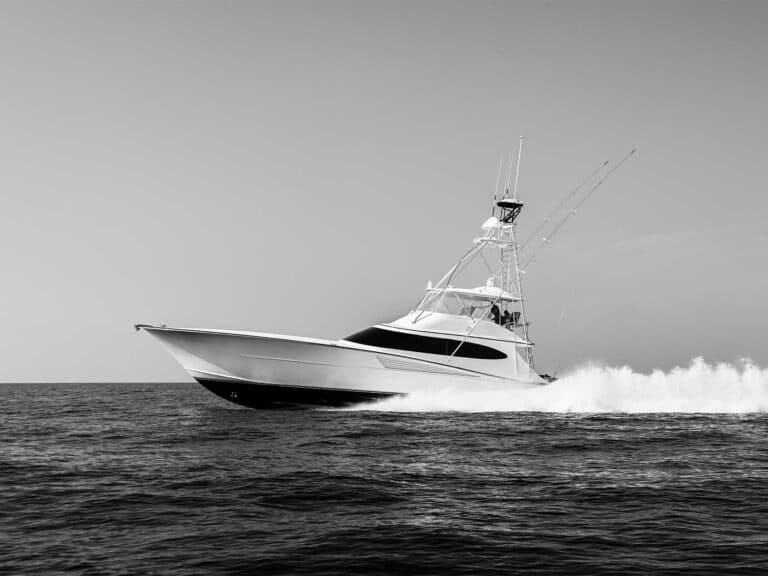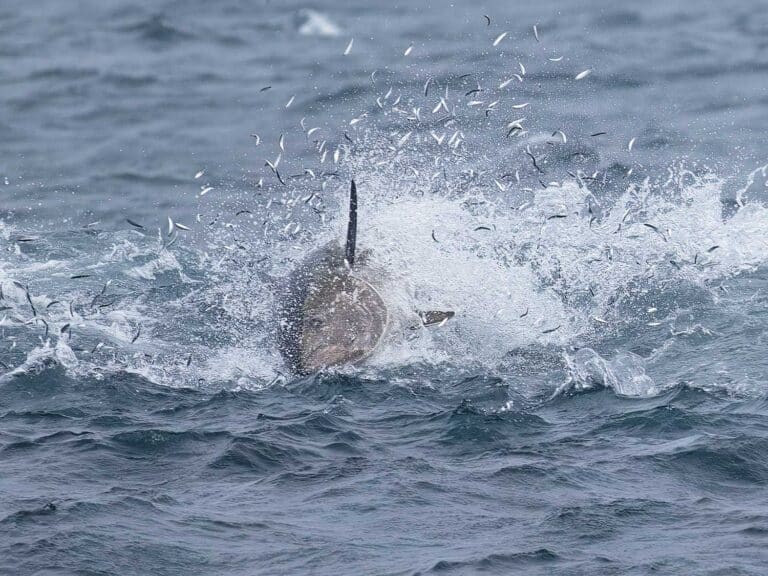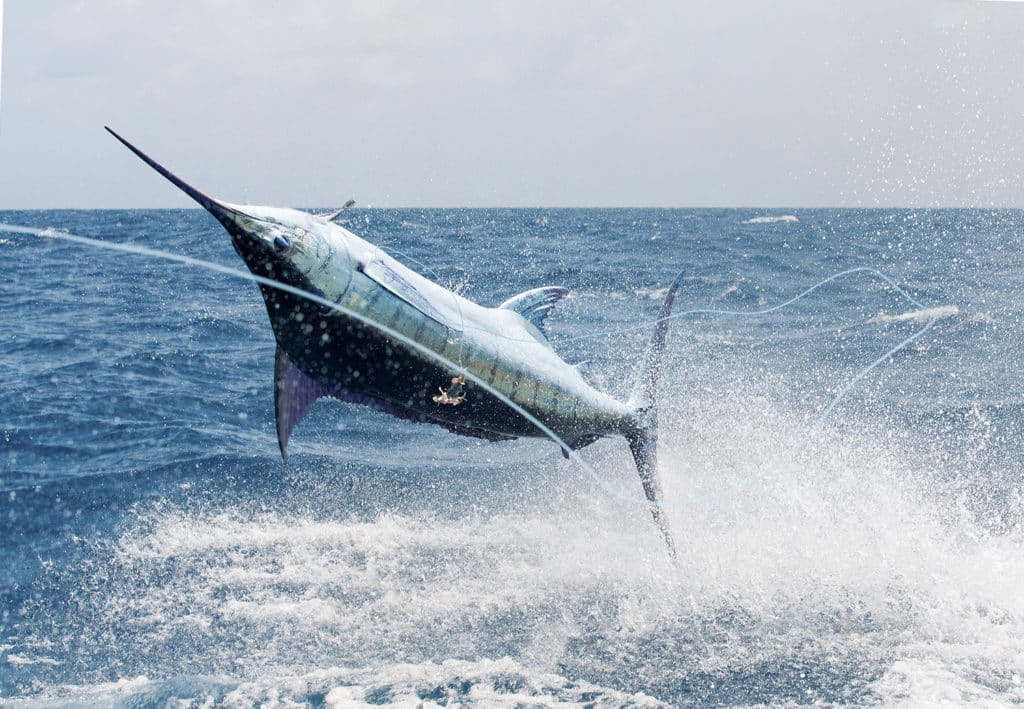
Preparing for the Big Bite
We spend exorbitant amounts of money on boats, rods, reels, line, leaders, lures, bait, moorage, maintenance and crew fees. Why? Well, it is relaxing and an opportunity to be on the salt with friends and family. But there are other ways to enjoy these same experiences with far less hassle. So, again, I ask: Why? I choose to point the finger of blame at Hemingway. We all strive for that Old Man and the Sea moment in our lives!
As blue-water anglers, we dream of thousand-pound marlin. Chasing a grander is on par with playing the lottery. It truly is a numbers game. The more times you put yourself in position for success, the better your chances of attaining your goal. But we must be ready for that moment and be diligent in our preparation. One misstep and a lifelong obsession could become a lifelong nightmare. Preparing for a grander starts with attention to detail by each member of the crew. Although we believe we have the willpower of Santiago, it truly takes a team effort to capitalize on a big bite.

When shopping for gear at your local tackle shop, remember that quality is king and act as though money is no object. Buy right the first time and not to simply get by for the day or for the season.
Captains Chris Donato and Ryan O’Halloran agree that personal preference will play a role in determining the right rod for each angler. However, they also concur that a 130- to 180-pound-class rod is ideal. “Look for a rod that bends slightly near the tip but has plenty of backbone at least halfway through the rod,” says O’Halloran. “You do not want a rod that bends to the foregrip; this will put too much strain on an angler when drag pressure is in excess of 40 pounds.”
“I prefer the stump-puller rods that barely bend,” Donato adds. “There is a lot of knowledge that goes into building a rod for big billfish. I let the professionals construct them, and I will trust their design.” Donato makes one other important point that might be overlooked. “Whichever rod you choose, make sure it will clear the corners.” Each boat is built differently, and if the rod does not allow the angler to clear the line around the corners of the stern, you could risk losing a big marlin — or even worse, have a record fish be disqualified for IGFA record consideration because the mate needed to manually clear the corners during the fight.

You need 130s, period. “Many people will say that you can catch a grander on an 80 or a 50,” says Donato. “Yes, you can, but the fish will need to make several mistakes. If you ask anyone who has landed a grander if they knew they would have that opportunity on that day, nine out of 10 would say no.” If you are in an area known for big marlin, be prepared. You will never know which lure the monster will climb on. “Elephants eat peanuts,” adds O’Halloran. “If you are running a 50 on the shotgun and your grander decides to chew on it, you are in for almost certain disappointment.”
O’Halloran states that most captains are using 700 yards of Dacron backing with 200 to 300 yards of IGFA-rated monofilament as a top shot. This is done because the backing has a smaller diameter, allowing for more line capacity. He also uses hi-vis colored line for when the fish is near the boat to be able to determine the line angle, allowing him to better control his 37-foot Merritt. Both use 400- to 700-pound-test leaders, and both shy away from fluorocarbon. “Fluorocarbon can shatter when a big marlin is jumping,” says O’Halloran. “And in the larger diameters, fluorocarbon leader is not going to make much of a difference.” “In February 2014, we had an absolute monster on, but it ate a small lure on a 300-pound leader,” Donato adds. “We could not fight it properly or pull hard on the leader. Eventually, the fish went deep on us, and the hook pulled after a two-hour fight. If we had had 530-pound leader on, we would have hung that one.”
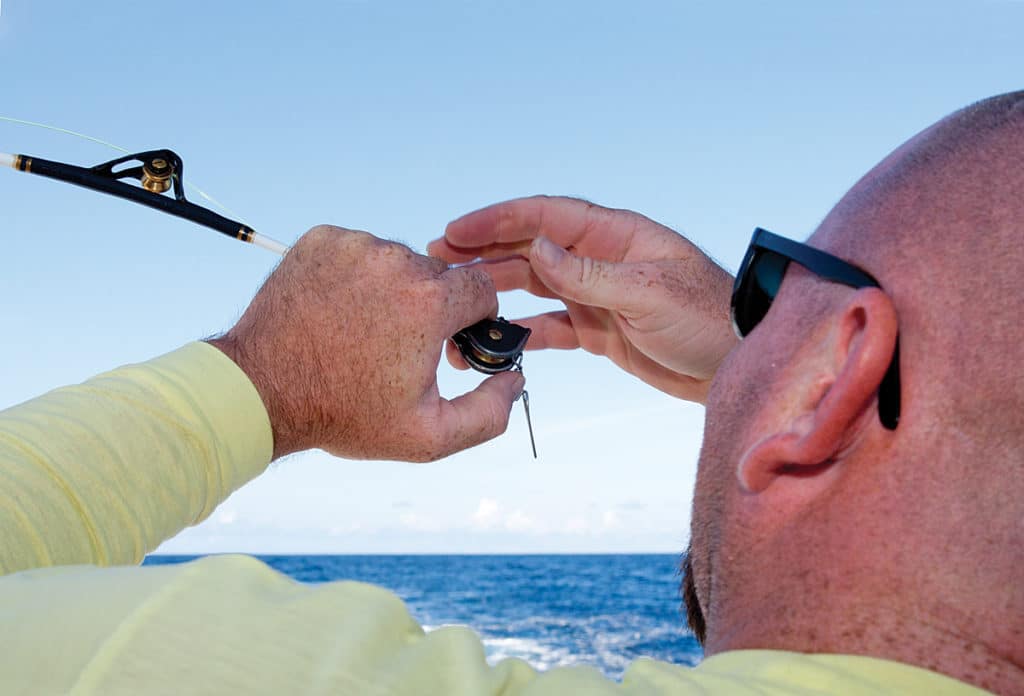
Stay on top of cleaning and replacing your equipment throughout the season. For the rods, make sure the reel seats have not backed off. Look at the rollers and use a cotton swab or cotton ball to check for burrs in the metal. Both O’Halloran and Donato have their reels rebuilt annually, with spares available at a moment’s notice. Change your line if you ever have any doubt it could be marred.
Donato changes his leaders every day and even after each knock-down, much to the dismay of his mates and his wallet. “In big-game fishing, you can only control a few things, and one of them is making sure your gear is 100 percent perfect and fresh,” he says. “When the big bite comes after driving around for eight hours, you will have no concerns in the back of your mind. You are only as strong as your weakest link!”
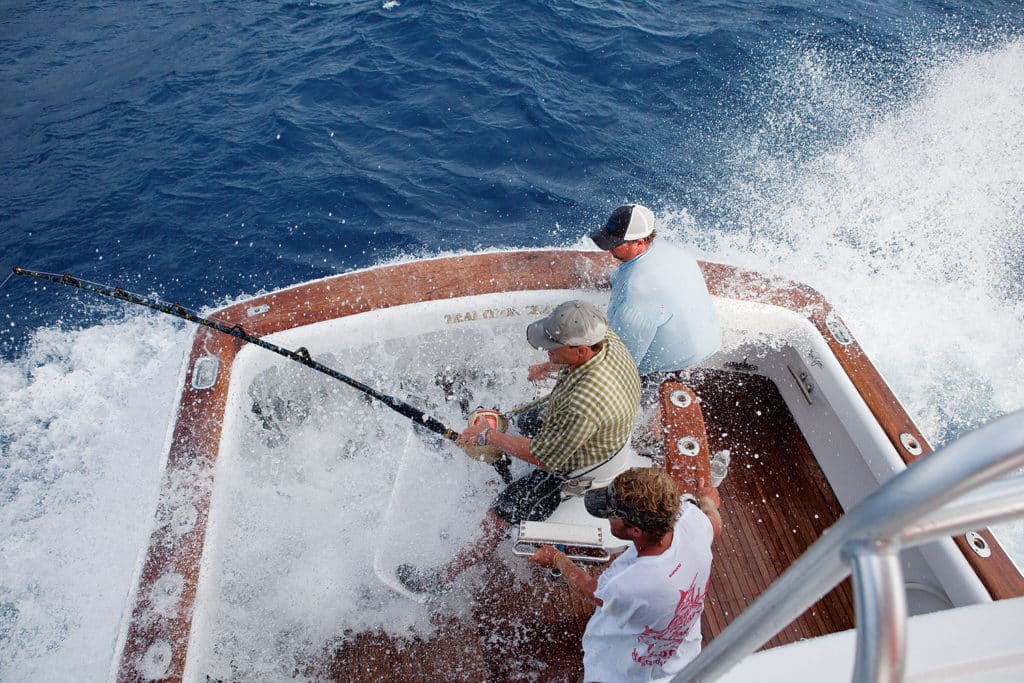
The captain is the team leader. It is his job to put the gear on top of a grander and make the right movements to entice the big bite. They also have the best overall perspective of the fight. I asked Donato for his thoughts on the role of a captain during the heat of battle.
“The captain must have a game plan and control over the situation,” he says. “However, I do not agree with captains yelling at or reprimanding the crew during the fight. This only creates confusion. The best teams don’t say much when the bite is on. The key is for everyone to know their role and simply do it. On the bite, I will make a slow turn toward the fish to clear the spread. This also puts the boat in position for when a big fish stretches us thin, so we can quickly back down on her with the rest of the spread clear to one side.
“I never run forward if a fish is jumping at the boat,” Donato adds. “Instead, I create a belly in the line by turning away. This will keep pressure on the fish with the drag from the line in the water. Pulling forward is the worst thing you can do. There is a good chance you can pull the hook or worse, position the fish to jump directly in the boat. I want the pressure pulling from behind the fish, and I want to see its back.”
When the fish is at the transom, Donato has these words of advice. “Every fish is different. I like to creep up on them and back down with the fish on either side of the boat. Some fish won’t let you, and it becomes easier to run alongside them.” When this occurs, Donato pays close attention to her body and tail for any indication that she might make a quick burst. You can save a wire man a lot of grief, prevent popping leaders or bending out hooks by matching the speed of the fish.
“The most difficult situation I come across is when the fish sounds,” Donato continues. “The line angle is close to the transom with 60 pounds of drag or more. The slightest mistake by me when trying to change the line angle to raise the fish can break the line, or the hook can pull. Even if something happens out of my control, I feel the pressure. The most common mistake I see is doing nothing. Work with the angler and work quickly to leader that fish. The longer you fight a big fish, the more likely you are to lose her.”
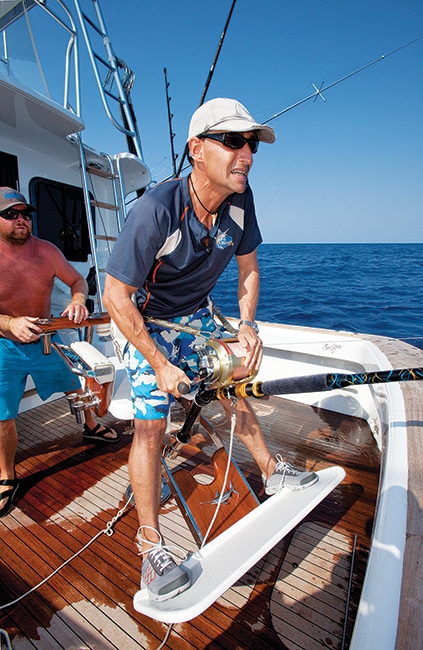
As the angler, remember these five points to be prepared for the moment when a grander appears in the spread:
Patience We spend hours sitting, standing and sleeping in the sun. Between bites, it is up to the angler to allow the captain and crew to work. Keep a positive attitude throughout the day and be ready. As one of Donato’s clients reminded him during a slow day, “We are but one bite away from a world record!”
Physical Fitness This key aspect is often overlooked among anglers, myself included. As an elk bowhunter, I take endurance seriously. Going toe-to-toe with a grander is every bit as grueling of a task. These battles can last several hours, and it is the physical training you put in as an angler prior to this day that will give you the grinding power to turn the handle when it is time to back down.
Communication Know when to listen and when to speak. Listen to your captain, talk with your mate. After fishing with the same crew even for a few days, you will begin to learn what information each person needs to be able to do their job. When I fished with Donato, we learned to communicate quickly. My commands were, “Tight,” “Loose,” “Run,” and “Go.” Run, the marlin was taking drag. Donato would be able to make the decision to back down or, if the fish was sounding, hold tight.
When the marlin slowed, Donato would ask, “Ready?” My response would be, “Go!” He would begin backing down on the marlin, and I would inform him of the tension on the line to ensure we kept pressure on the fish by stating “Tight,” or “Loose,” during the process. Tight, he could back down quicker; Loose, he would slow his engines to allow me to catch up on the reel to keep pressure on the hook.
Awareness Pay attention to your surroundings. Even though there are several eyes on the water, a tailing marlin or floating debris can be missed. Once the bite has occurred, be on point. Be aware of how the fish reacts to the changes in pressure during the fight. Each billfish has its own personality and being able to respond as an angler to the change in tactics is a valuable asset.
Repetition Get on the water as often as possible. Any experience you can gain from targeting billfish will be invaluable. We don’t hunt giants on every outing, but the time we spend strapped into the harness with a marlin on the other end of the line will give us the tools to be prepared when the fish of a lifetime rises in the spread.
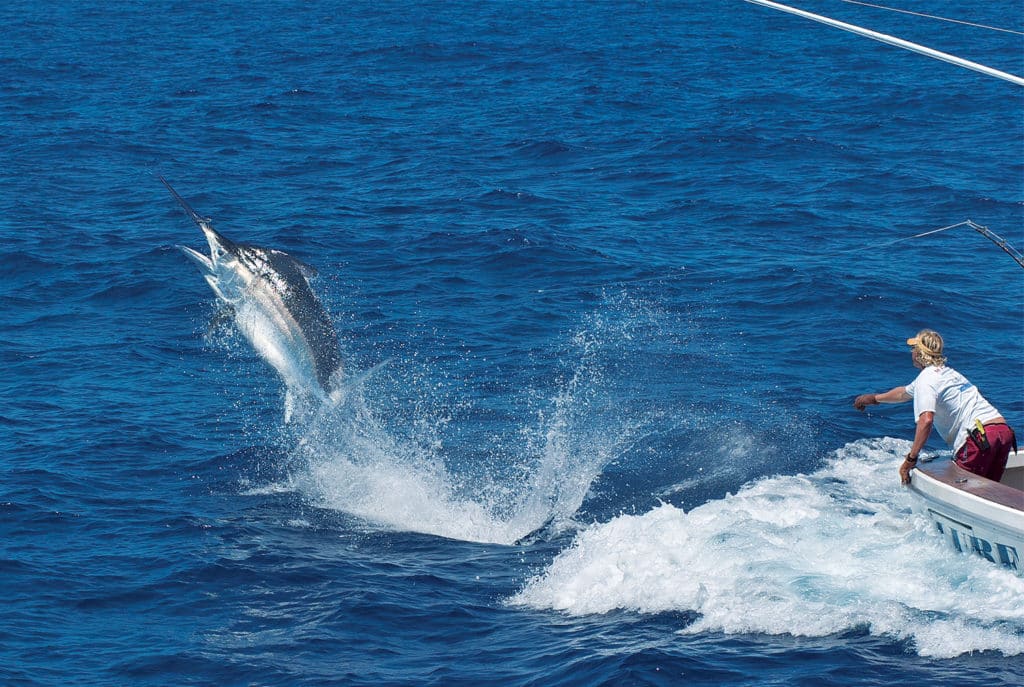
The captain has put us on the fish, the angler has closed the distance and now it is up to the wire man. A battle can be won or lost in a matter of seconds. Leadering truly is an art form. I asked O’Halloran to give us some insight. “When we first hook up, my action is dependent upon the experience of the angler,” he says. “If it is an angler I have fished with before, I will clear lines first. With other anglers, my primary focus is on a safe transition from the rod holder to the chair, then clearing the lines. During the fight, I make sure the angler is comfortable and watch how the fish is fighting.”
When asked if there was an ideal time to reach for the leader, he immediately responds, “The best time to grab a leader is as soon as you possibly can. The best guys make it look easy by always staying square to the fish and never letting your hands get above your head when taking wraps. Leadering is just that: You are leading the fish to the boat. You must learn to follow the fish around the vessel and learn when to let go, especially when it’s jumping straight away.
“If a smaller fish is breaching near the boat, there is a chance you can flip the fish in the air by keeping too much pressure on them,” O’Halloran continues. “This can cause the fish to come off — or worse, jump straight at the boat. As for bigger marlin, knowing how to take a solid backhand wrap while leading a big fish is very important. Bigger marlin can get down and dirty, swimming hard with their head down. Trying to get in a traditional overhand wrap at this point can be nearly impossible.”
